Can salmon be fun? They can be when you take them by the collar and make them try on new seasonings. Or just hit it with the old salt and squeeze of lemon for the classic izakaya style salmon collar found in Japanese restaurants.

Unlike hamachi collars that are huge, salmon collars are just the right size to serve one per person as an appetizer. Otherwise, serve 2-3 as a main course.
This would make a really fun meal next to other finger foods like well seasoned edamame pods. If you can't find salmon collars, try these similar seasoned salmon recipes for furikake salmon and a quick pan seared sockeye salmon.
Jump to:
Why you might consider making this @home
- Lower Cost - Salmon collars usually cost a lot less than salmon fillets. I find this to be especially true with king salmon fillets costing $30 per pound, but king salmon collars will cost $13 per pound.
- Hard to overcook - There is so much fat and collagen in the collar, they practically baste themselves in the oven. Even if you accidentally leave them in the oven too long, they'll still be moist.
- Opportunities to experiment - Since they're already individually portioned, you can play with seasoning each one differently. Take liberties that you would not take with a precious fillet of salmon.
Ingredients
These ingredients are for the classic version of salmon collars served in Japanese restaurants that is simply seasoned with salt and maybe some oil prior to cooking.
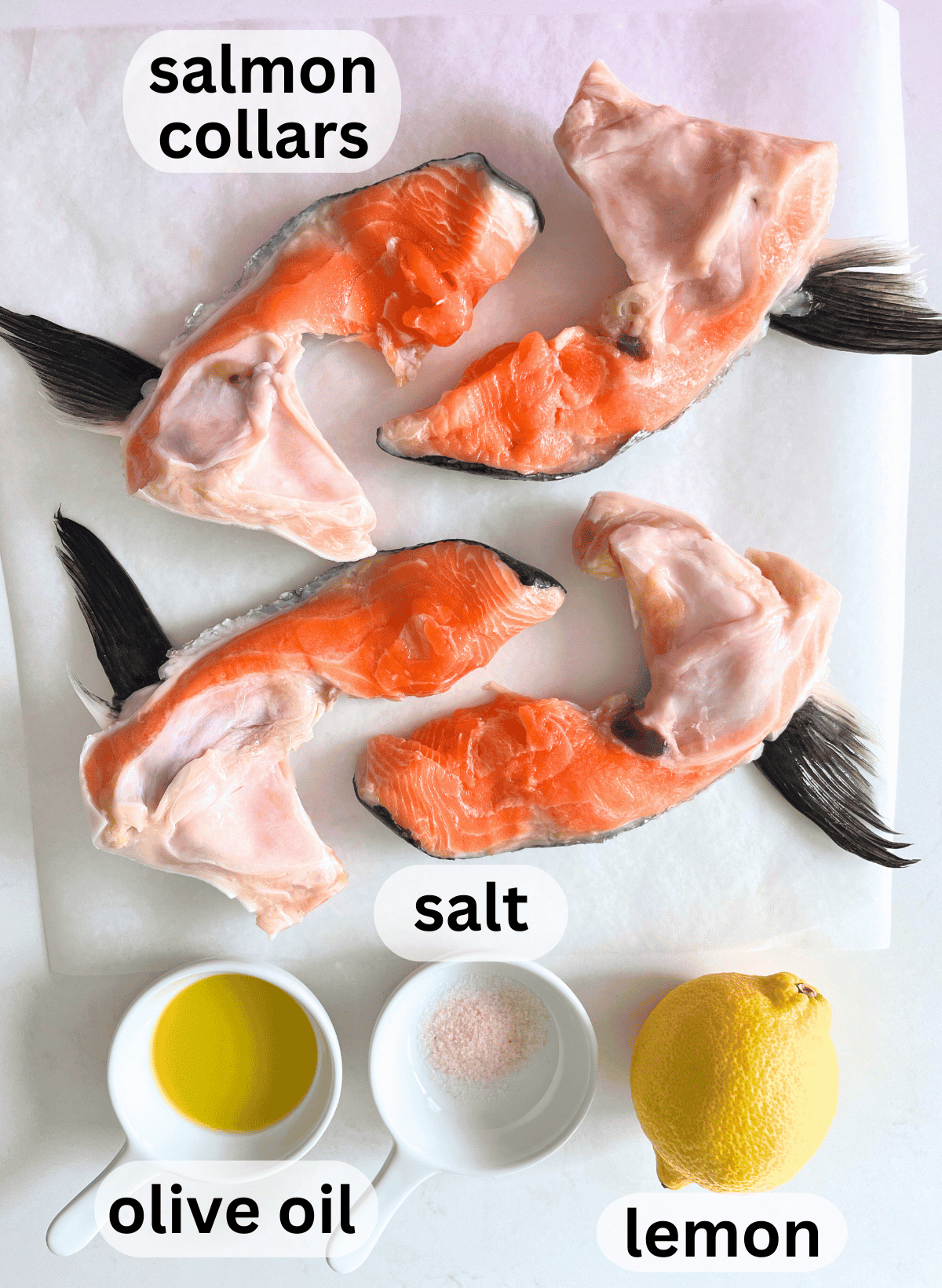
- Salmon collars - I get these are available directly from seafood purveyors at the farmers market, rather than at regular grocery stores. Alternately, maybe you have a whole salmon. You can cut off the collar right behind the gill. Whether you have a king, sockeye, or Atlantic salmon, the cooking method and instructions should be the same.
See recipe card for quantities.
Fun Optional Flavorings
If you want to try out new seasonings for salmon, the collar is a great place to do it, since you won't feel like you're wasting a whole precious fillet.
I've tried all of the below seasonings and in combination with each other for 'kitchen sink' salmon seasoning.
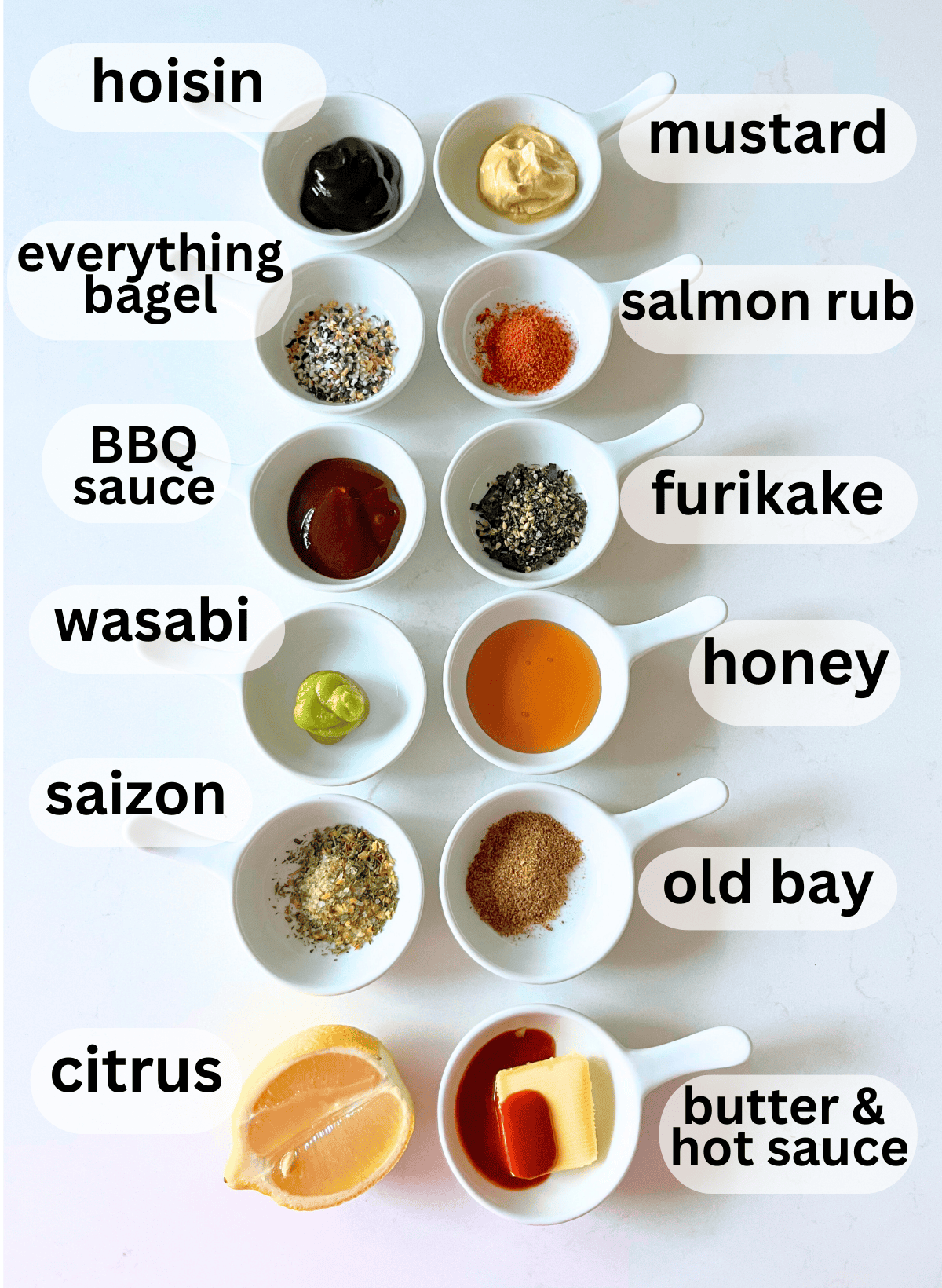
- Salmon rub - I used Trader Joe's salmon rub. It is especially bright red and made with paprika, brown sugar, and thyme.
- Furikake is a traditional Japanese seasoning. It goes on everything including salmon, like this traditional Hawaiian salmon.
- Saizon is a traditional Puerto Rican seasoning that goes on all kinds of proteins and vegetables.
- Butter and hot sauce is for the classic buffalo sauce that goes on chicken wings, but I really like it with salmon too.
- Citrus can include oranges and limes in addition to lemons. The combination of honey and lime juice on salmon is another classic dressing for salmon.
Instructions
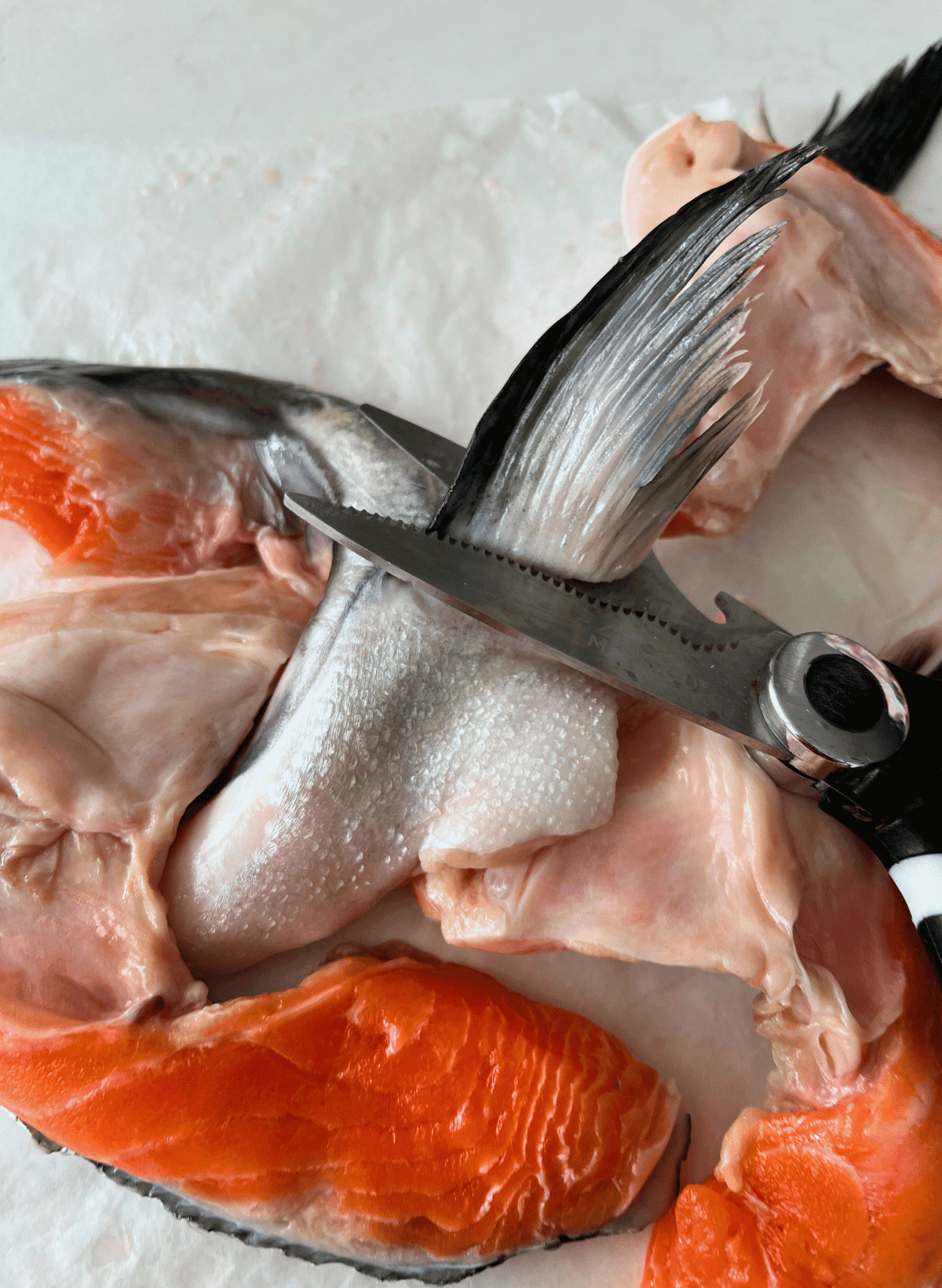
To fin or not to fin? The collars usually include the pectoral fin. You can snip them off or just leave them on. (They are not edible.)
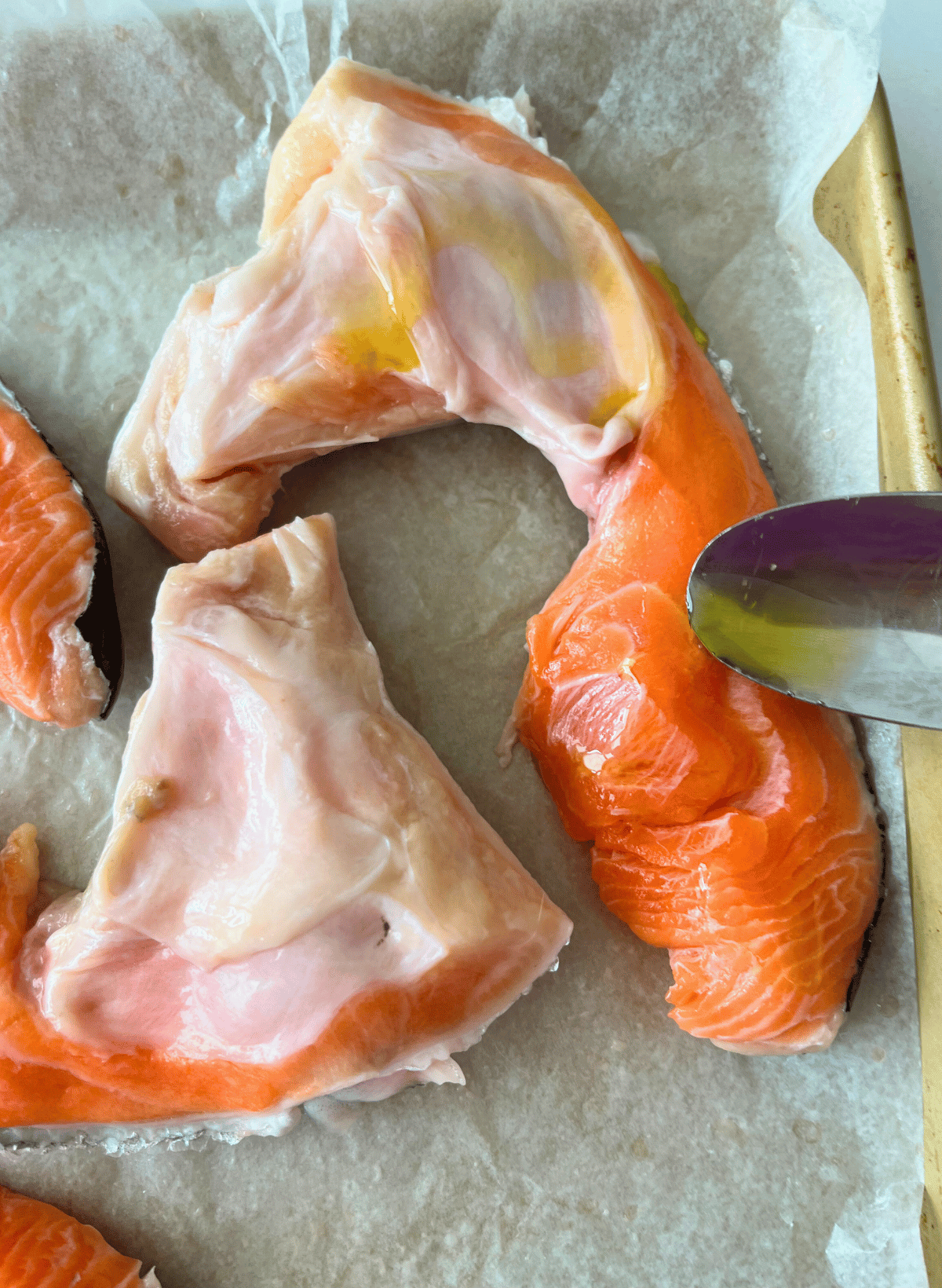
Brush the salmon with a little bit of oil helps them brown and also helps spices stick to the flesh.
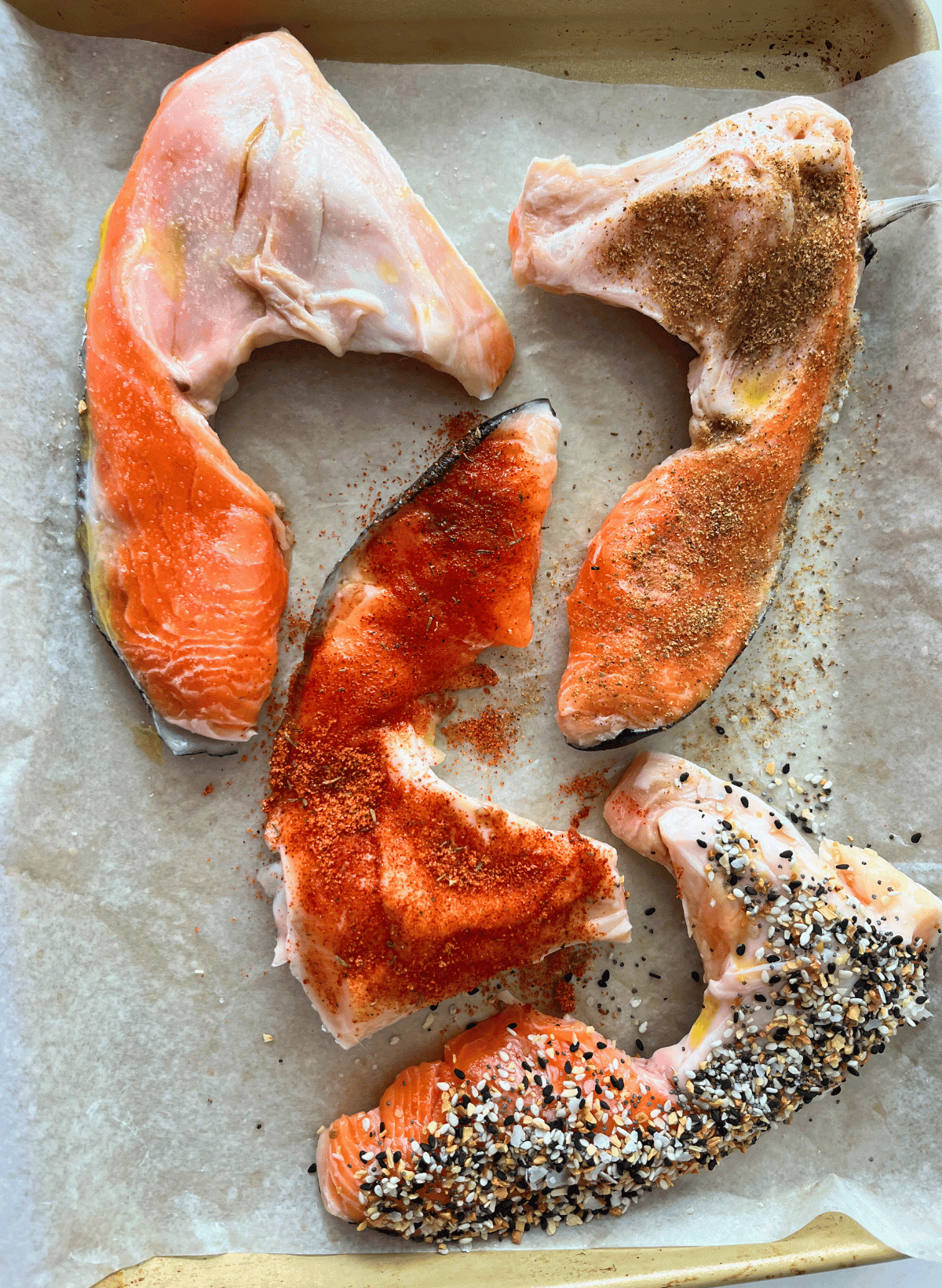
You can flavor each collar differently or all the same. Top left = salt. Top right = old bay seasoning. Middle = Salmon rub. Bottom right = everything bagel seasoning.
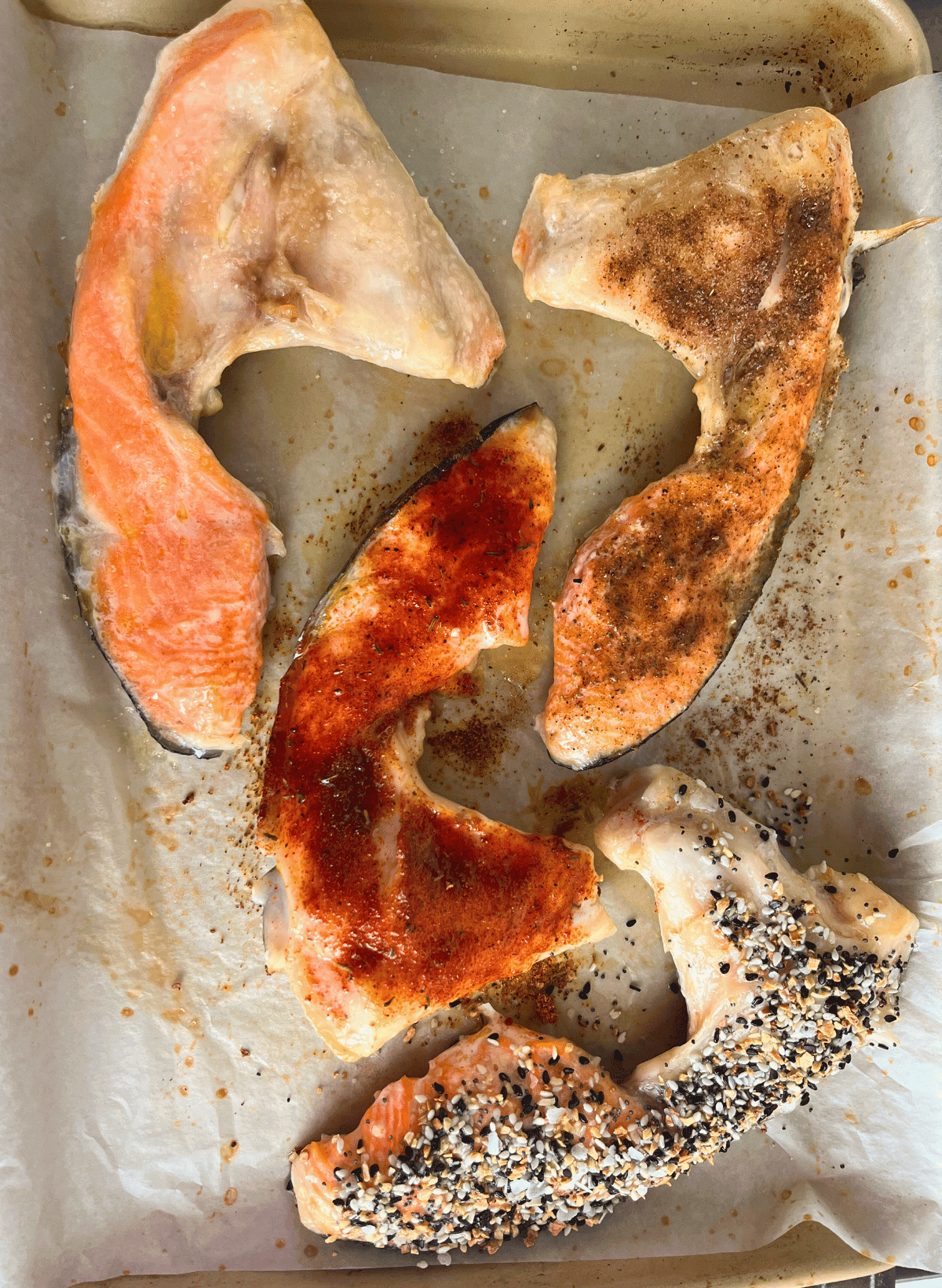
Bake in a preheated 400 degree F oven for 10-15 minutes. I did these for 12 minutes. They don't easily overcook, and I like when the seeds on the everything bagel seasoning get crispy.
Whether you use parchment paper or foil to line your baking sheet, it should be brushed with some oil, since the sticky salmon skin will stick.

Other seasonings clockwise from the top left include buffalo (butter and hot sauce), furikake, bbq sauce, Puerto Rican saizon seasoning, hoisin sauce, and honey glazed with lime slices.

For this batch, I left the fins on. You don't notice them too much, since there's already quite a bit of bone to work around anyway.
Air Fryer Instructions

I like using the paper trays fitted for the air fryer, so the food doesn't touch the nonstick coating. One pound of salmon collars fit in a 6qt air fryer basket.

Air fried at 400 degrees for 10 minutes, the collars turned slightly more browned than the oven baked version. These were seasoned just with salt and no oil.
Caution: Salmon collars do have a lot of skin, long bones, and cartilage plates to work around as you bite into them. Make sure you let people know who've never tried them before.
Substitutions
- Other fish collars - This recipe works well with hamachi collars or other fish collars you can find. Just adjust the cooking time depending on the size of the collar.
- Salmon fillets - Can't find salmon collars? These seasonings also work just as well with regular salmon fillets too, particularly with sockeye salmon which has a similar cooking time due to it's thin size.

Storage
Store the cooled salmon collars in an airtight container for up to 3 days in the fridge. Freeze for up to 1 month.
Tips to make it better @home
This recipe serves 4 as an appetizer or 2 as a main course. This assumes each salmon collars is about ¼ lb each.
- Like regular salmon fillets, discard the bones and cartilage plates when eating. Eat the skin if you wish. Take caution when eating and warm guests who have not eaten collars before.
- Optional Fun Flavorings - Consider any of the following seasonings instead of salt to make your collars more fun.
- Use enough to coat the top side of the collar (skin side down). This will be about ½ - 1 tsp.
- Playing around by mixing and matching these seasoning is a great idea too. A general rule of thumb is to use 1 wet seasoning and top with 1 dry seasoning.
Wet seasonings (use in place of oil in the recipe)
- Hoisin sauce
- BBQ sauce
- Wasabi paste
- Mustard
- Honey
- Citrus
- Softened or melted butter
- Hot sauce
Dry Seasonings
- Everything bagel seasoning
- Puerto Rican saizon seasoning
- Trader Joe's salmon rub
- Furikake
- Old Bay
(I have mixed all 5 of the dry seasonings together and coated a salmon collar with it to see what would happen. It was actually quite tasty but a little bit salty.)
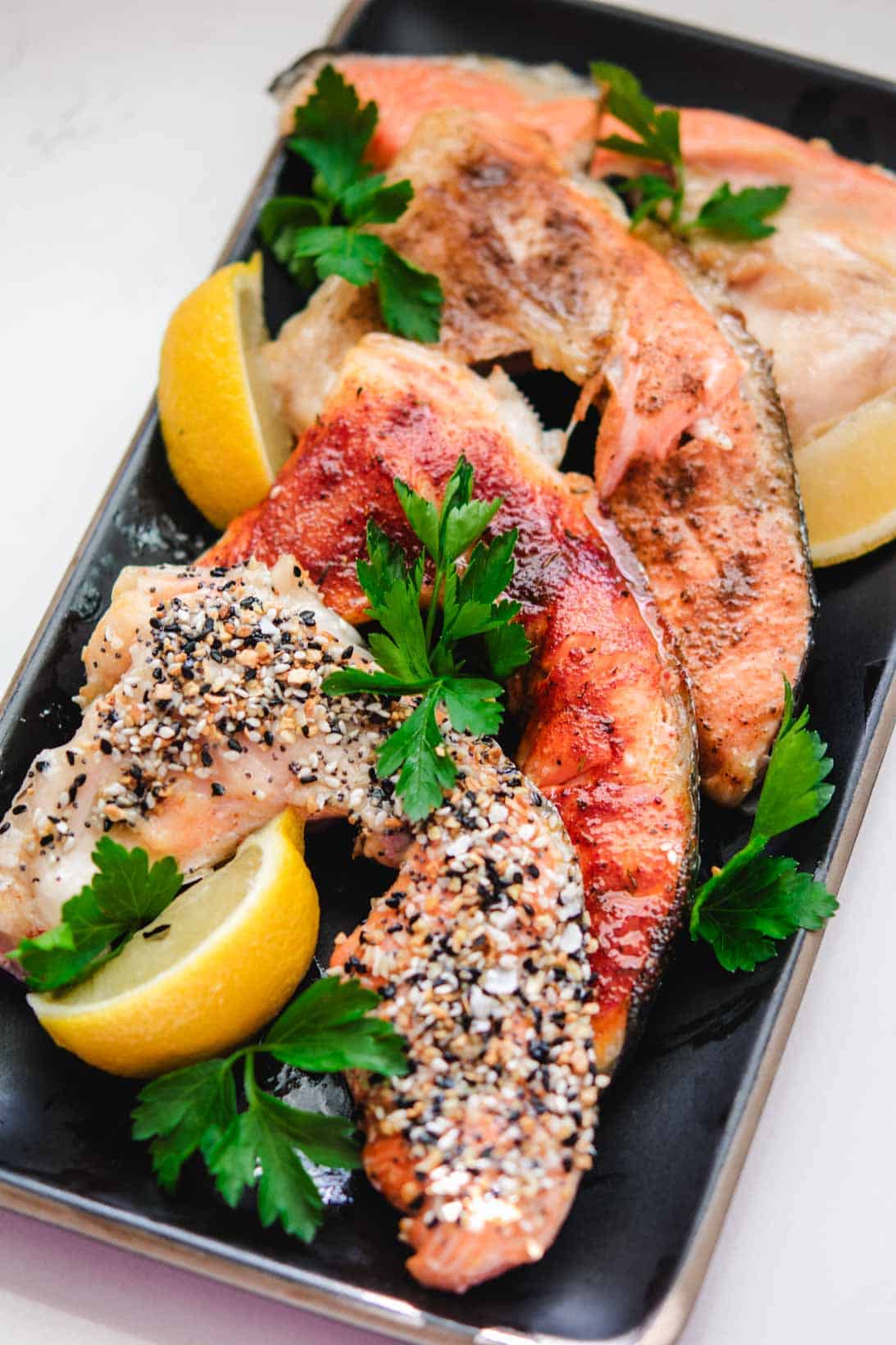
Related Salmon Recipes
Looking for other recipes like this? Try these:
Side Dish Recipes
Recipe
Fun Baked Salon Collars (oven or air fryer)
Ingredients
- 1 lb salmon collars pectoral fins removed, optional
- 2 teaspoon oil such as olive oil, coconut, or avocado
- salt to taste (for me this is a ½ teaspoon of pink Himalayan salt) see Note 2 for Optional Fun Flavorings
- lemon wedges for garnish and squeezing on top tableside
Optional Flavorings instead of salt
Instructions
- Preheat the oven to 400 degrees F.
- Spread the salmon collars on a baking sheet brushed with oil. Line with parchment paper or foil if preferred, and brush with oil so the salmon skin will stick to it.
- Lay the salmon collars skin side down and with the flesh side face up.
- Brush salmon collars with oil.
- Season with orange flesh salt or optional flavorings.
- Bake in the oven for 10-15 minutes until cooked through. The salmon should be firm to the touch and register 145 degrees F in the thickest part of the flesh.
- Air Fryer Instructions: You do not need to preheat the oven. Instead of 400 degrees, air fry fry at 375 degrees for 10-15 minutes. (My quarter pound sized salmon collars were finished cooking in 10 minutes, but I like leaving them in the oven for 12-15 minutes for extra browning and crispiness of the toppings.)
- Serve hot with lemon wedges on the side. Take care to avoid the bones and caution guests of their existence.
Notes
- Like regular salmon fillets, discard the bones and cartilage plates when eating. Eat the skin if you wish. Take caution when eating and warm guests who have not eaten collars before.
- Optional Fun Flavorings - Consider any of the following seasonings instead of salt to make your collars more fun.
- Use enough to coat the top side of the collar (skin side down). This will be about ½ - 1 tsp.
- Playing around by mixing and matching these seasoning is a great idea too. A general rule of thumb is to use 1 wet seasoning and top with 1 dry seasoning.
- Hoisin sauce
- BBQ sauce
- Wasabi paste
- Mustard
- Honey
- Citrus
- Softened or melted butter
- Hot sauce
- Everything bagel seasoning
- Puerto Rican saizon seasoning
- Trader Joe's salmon rub
- Furikake
- Old Bay
Nutrition
Food safety
We sometimes take for a granted that we have years (or decades) of cooking experience, that the average visitor may not. Add to, or remove from, the list below with health and safety tips.
- Cook to a minimum temperature of 165 °F (74 °C)
- Do not use the same utensils on cooked food, that previously touched raw meat
- Wash hands after touching raw meat
- Don't leave food sitting out at room temperature for extended periods
- Never leave cooking food unattended
- Use oils with high smoking point to avoid harmful compounds
- Always have good ventilation when using a gas stove
See more guidelines at USDA.gov.
Fortune Cookie 🥠
Instead of competing, all we have to do is create.
Earl Nightingale



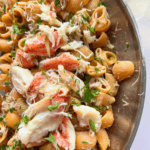
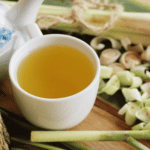

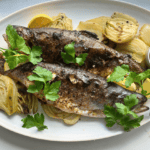
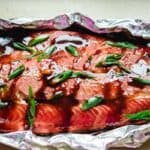
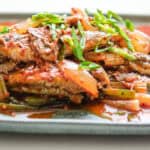
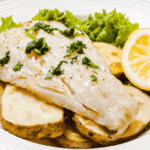
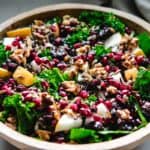

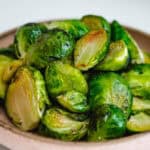



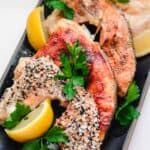




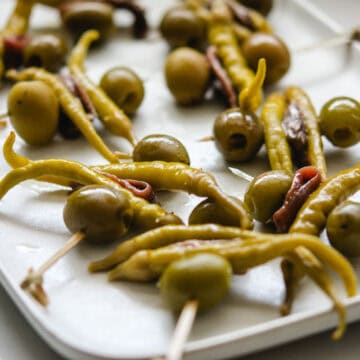
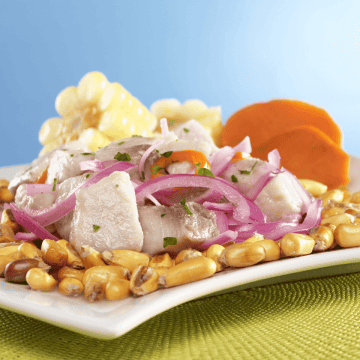
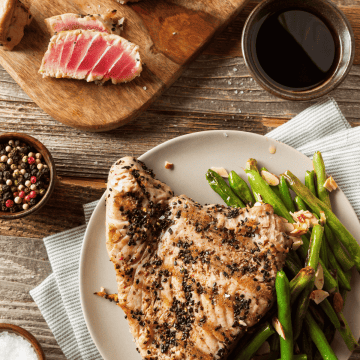


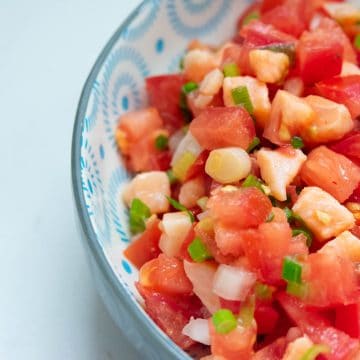
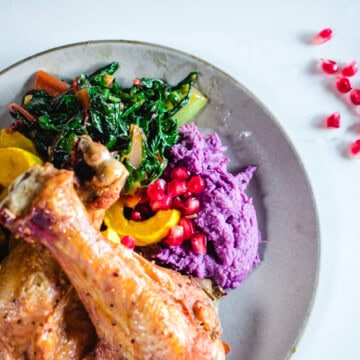


Leave a Reply